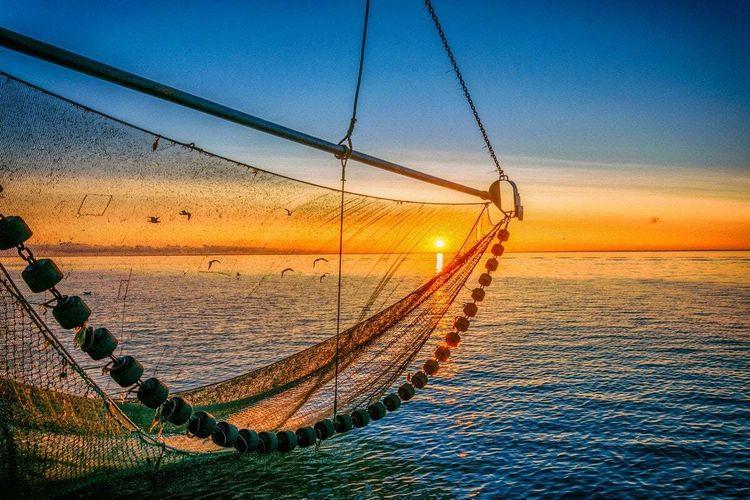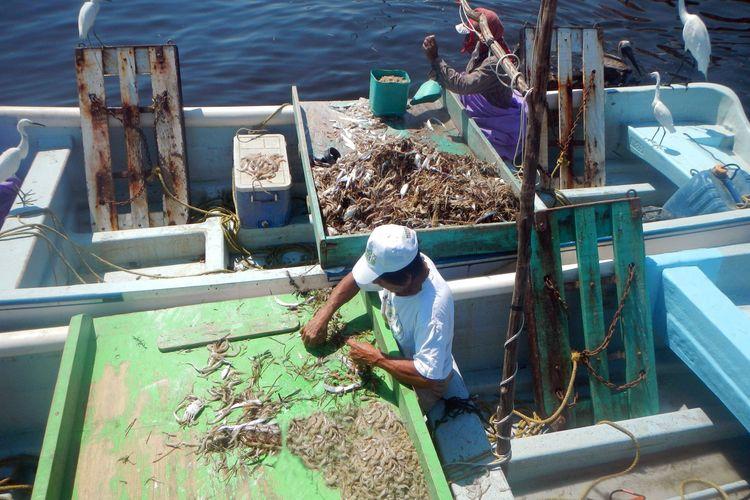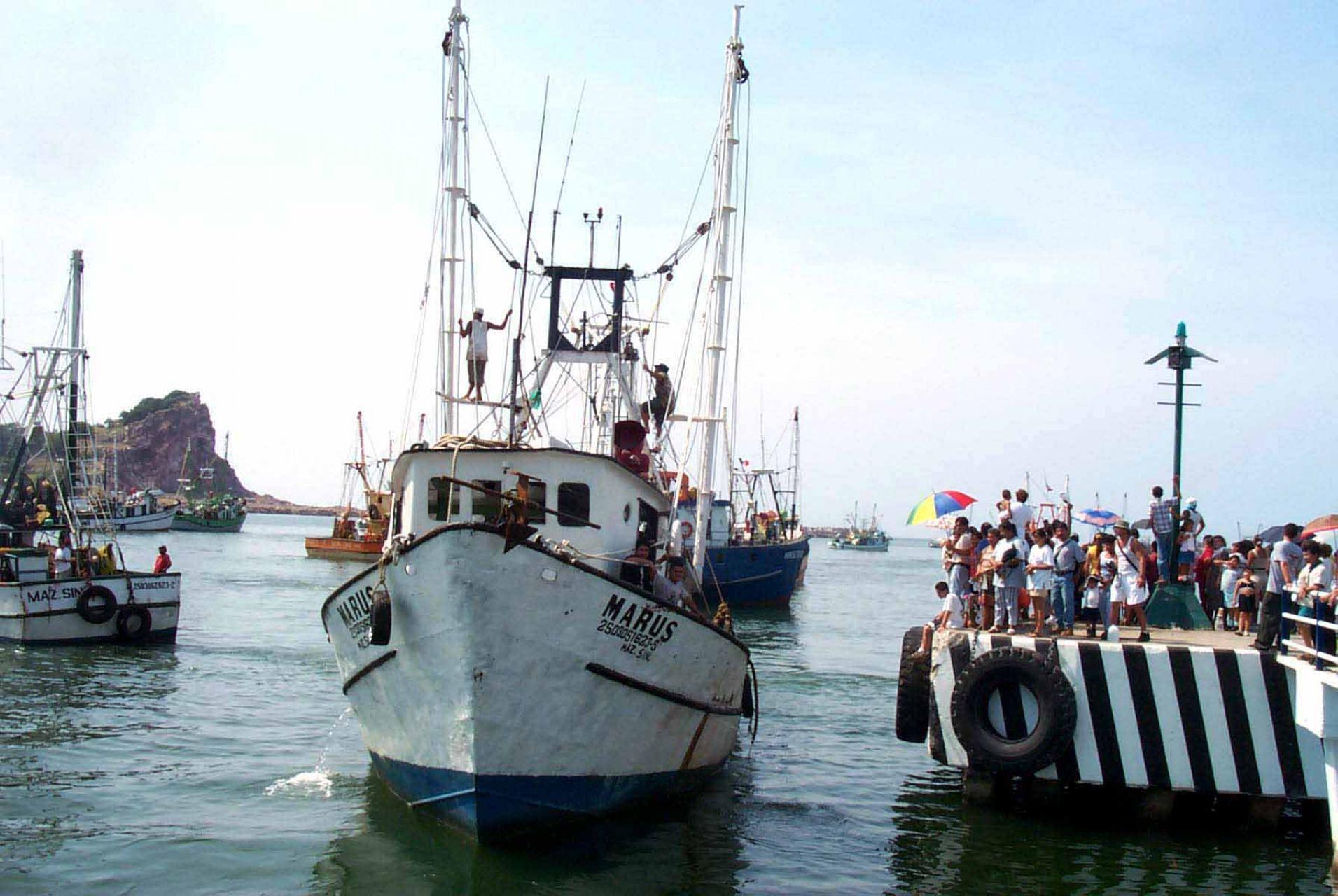Trawl fishing, the most used mechanism in the world for catching fish on a large scale, is a subject of discussion in many countries because of its economic, environmental and social implications.
Is it worth perpetuating an economic activity that destroys marine ecosystems? Is it possible to do sustainable trawling? What implications does the cessation of this activity have for the economy and food supply? These are, roughly speaking, some of the points being discussed by scientists and civil society organizations.
This type of fishing, as its name suggests, consists of dragging a net over the seabed, driven by one or two boats, to capture what it finds in its path.
According to the United Nations World Food Organization (FAO), worldwide trawling represents approximately a quarter of total marine catch production. In Latin America, the estimated figure is 17%.
Andrés Beita Jiménez, a quantitative fisheries scientist at the Marine Institute of the Memorial University of Newfoundland, in Canada, explains that there are several reasons why trawling represents a risk to marine ecosystems.
As these are non-selective fishing nets, in most cases, there are high volumes of incidental fishing (discards), that is, of marine species that are extracted without being of commercial interest and without respect for fishing sizes.
“It doesn't distinguish the species that are trapped or their growth status,” he explained in an interview with Causa Natura Journalism.
In 2019, FAO published its third assessment of global discards from marine fisheries. The report estimates that around 9.1 million tons of by-catch are extracted each year, of which 4.2 million are trawls.
In addition to this, the oceans are large reservoirs of Carbon Dioxide (CO2) generated by human activities. When a huge fishing net creeps up, it also destroys the seabed and releases large amounts of stored CO2, Beita said, a situation that worsens global warming.

Photo: Ministry of Agriculture and Rural Development
A Look at International Regulation
According to the OECD Fisheries Report, 26 of its 35 member countries use trawling techniques to catch fish and crustaceans.
Local laws have aimed at practices that reduce the impact on marine ecosystems of this type of fishing techniques and, in rare cases, their absolute prohibition has been reached.
Another form of regulation is independent certifications. One of the most recognized is the Marine Stewardship Council (MSC) standard, a fishery eco-labeling program that meets the best practice requirements established by both FAO and the World Association for Sustainability Standards.
The program currently has 218 certifications worldwide, of which 111 are for trawling.
In the United States, trawling fisheries are regulated by the Magnuson-Stevens Fisheries Management and Conservation Act, which includes eight regional fisheries management councils, a management system that seeks to develop local sustainability strategies.
In the United States, in the case of trawling, bottom nets can be used only in designated areas, at least 3 miles away from the coast.
In January 2020, a marine area on the east coast of the United States was extended over 31,000 square kilometers, in which trawling was completely banned, at the proposal of one of the councils, the Pacific Fishery Management Council.
Specialist Andrés Beita said that both the United States and Canada have made progress in implementing technologies to reduce by-catch, as well as in the generation of data on fisheries.
In the case of Pacific Canada, he said, incidental fishing is less than 3% of the total product extracted, unlike other fisheries in Latin America, where it sometimes exceeds 100%.
The Nordic countries have also implemented a series of strategies to seek the sustainability of trawling. For example, in Denmark, the Common Fisheries Policy has restrictions on the use of trawls in specific areas and requires the use of technologies and accessories such as protective bags or exit windows.
In New Zealand, local law also imposes minimum catch sizes, prohibits net attachments that damage the seabed and fishing in restricted areas.
In Mexico, trawling is allowed, under certain regulations. The Regulations of the Fisheries Act prohibit the use of nets in bays and estuaries, “except in those cases that are expressly authorized by the Secretariat after hearing the opinion of the National Fisheries Institute”, as indicated in article 33.
The National Fisheries Charter prohibits the use of trawls in some Protected Natural Areas and Fishing Refuge Zones, such as the Mexican Caribbean Biosphere Reserve, the Upper Gulf of California and Colorado River Delta Biosphere Reserve, the Veracruz Reef System, and others.

Photo: Inapesca
Fishing gear, methods, systems and equipment, minimum catch sizes, and percentage of incidental fishing are established by the Ministry of Agriculture and Rural Development (Sader), through the National Fisheries and Aquaculture Commission (Conapesca) and the National Institute of Fisheries and Aquaculture (Inapesca).
In Argentina, there are Resolutions that regulate fishing in national waters, which define the characteristics of the nets to be used, type of boats and limits of simultaneous fishing.
Venezuela was the first country to completely ban this practice, following the approval of a new Fisheries and Aquaculture Law in March 2009. The measure, at the time, was applauded by environmentalists and questioned by businessmen in the industry.
The second country in the region to completely restrict this fishing technique was Costa Rica, in 2013, following a resolution of the Constitutional Chamber that proved environmentalists right, who alleged violations of their right to a healthy environment.
The case of this Central American country is an exception in Latin America, because in addition to the restriction, subsequent studies have made it possible to evaluate the decision.
Randall Arauz, an environmentalist in Costa Rica and researcher at the US-based organization Fins Attached Marine Research and Conservation, said that the definitive ban on trawling in this country was a process of more than 20 years, of trial and error.
After stalling in national courts, environmentalists decided to take the lawsuit to the United States, leading to several embargoes on shrimp imports from Costa Rica, the longest of which was two years.
In 2012, without yet being able to implement the technology, activists and academics decided to take the case to the Constitutional Chamber of Costa Rica, which in 2013 decided that trawling threatened the nation's sustainable development. The last trawler operation was in 2019.
In 2020, based on its own technical study, the Costa Rican Congress decided that it was feasible to re-grant fishing permits for trawling. However, after a series of criticisms from the scientific and environmental community, then-president Carlos Alvarado Quezada rejected the proposal.
Arauz, also awarded the Goldman Environmental Prize in 2010, said that the benefits are already visible.
“Just 2 years after the fishing fleet ended, 30% more snapper catches are already being reported,” he said.
Chile's artisanal fishermen and civil society organizations are also pushing for an update to the Fisheries and Aquaculture Act. In a letter sent to President Gabriel Boric, who just protested, the fishermen asked him to keep unfinished promises from previous governments.
“They promised us to end trawling and it's still in force, they promised to end drilling and industrialists are still fishing in artisanal areas and they promised us a social platform and we are still unprotected,” says the letter signed by the National Council for the Defense of Fisheries Heritage (Condepp).
Good or bad? It depends on the context: experts
Andrés Beita Jiménez said that evaluating the sustainability or harm of global trawling is practically impossible, since this depends on the context of each country: the existence of regulations and their proper application; implementation of technologies to reduce by-catch; biodiversity in catch areas, among other issues.
The biologist said that scientific information is key to ensuring the sustainability of the seas, since it is one of the main deficits, especially in Latin America.
“There is little data and few specialists. Getting to the point of doing sustainable trawling requires a lot of scientific work,” he added.
Randall Arauz, for his part, asserted that it is possible to develop trawling while minimizing environmental damage, but for this it is necessary that States have the capacity to inspect and enforce regulations.
“If States can't regulate trawling, the best thing is that it doesn't exist,” he concluded.



Comentarios (0)